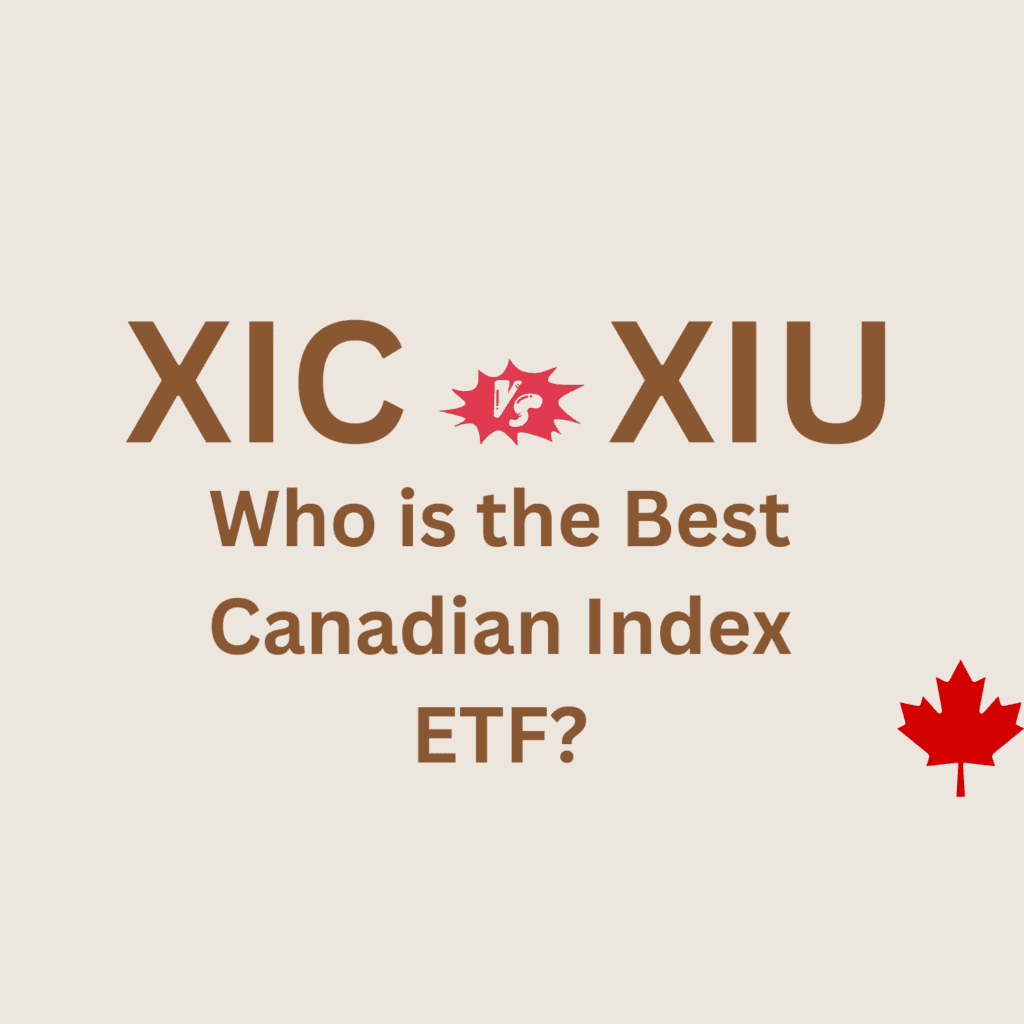In this post, we will be comparing two popular Canadian Index ETFs: XIU Ishares S&P TSX 60 Index vs XIC Ishares Core S&P TSX Capped Composite index. Fisrt, we will discuss the difference at the index level. Then, a full comparison of key metrics: Volatility, Management Expense Ratio, Historical performance and Dividend yield.
This post is available in Video Format!
What is an Index ETF?
An Exchange Traded Fund (ETF) is a type of investment fund traded on stock exchanges, much like stocks. Among the various types of ETFs, Index ETFs are particularly notable. They were the first kind of ETF introduced to North American exchanges. Index ETFs offer investors exposure to a broad range of securities, often encompassing entire markets, at a low cost. Their primary objective is to replicate the performance of a specific index by holding all the securities within that index, aiming to match its return minus any fees.
Do Index ETFs Pay Dividends?
Yes, Index ETFs do pay dividends. Since they hold shares of companies included in the index they track, any dividends paid by those companies are passed on to the ETF shareholders. You can see the dividend yield reflected in the performance table of the ETF.
Index Definitions
S&P/TSX Capped Composite Index
This index includes over 200 of the top-ranked Canadian stocks, representing about 95% of the Canadian equity market. To be included and remain in the index, securities must meet minimum float-adjusted and liquidity criteria. The weights of the constituents are capped at 10% of the index’s float-adjusted market capitalization, and these weights are reviewed quarterly.
S&P/TSX 60
This index comprises the 60 largest companies listed on the Toronto Stock Exchange, offering a snapshot of the most significant players in the Canadian market.
In summary, Index ETFs are a cost-effective way to gain diversified exposure to a wide array of securities, including potential dividend income, by tracking specific market indices.
ETFs selected for the analysis (XIC vs XIU)
| Name | AUM in M | MER |
| Ishares S&P TSX 60 Index – XIU | 10,730 | 0.18 |
| Ishares Core S&P TSX Capped Comp – XIC | 8,610 | 0.06 |
XIU vs XIC (Performance)
Performance comparison – XIU vs XIC updated daily

Comparison volatility – XIU vs XIC
| Name | Beta 5 yrs | Morningstar rating |
| XIU | 0.92 | 5 Stars |
| XIC | 0.98 | 4 Stars |
XIU has the lowest volatility. This is probably due the fact that its’ holdings are exclusively large Canadian companies. Large companies tend to be more stable than the overall market. The other ETFs have a beta of 1 which is not surprising since they track a more global market index.
How to pick the Best ETF that fits your need?
Diversification
The goal of diversification is to minimize risk by spreading investments across various assets. The XIC is the most diversified among index ETFs, with over 200 holdings. Following it is the XIU, which has 60 holdings.
Taxation
Both XIC and XIU distribute taxable Canadian dividends, resulting in similar tax implications for investors. However, if you prefer an ETF that tracks the S&P/TSX 60 Index without dividend distributions, consider the HXT. This ETF is structured to defer all income distributions, meaning no dividend distribution and, consequently, no immediate tax liability.
Liquidity
Liquidity can be assessed in two ways:
- Liquidity of Holdings: XIU stands out as it includes the 60 largest Canadian companies listed on the Toronto Stock Exchange.
- Liquidity of the ETF: This is measured by the average spread between the ‘Bid’ and ‘Ask’ prices. Both XIU and XIC offer excellent liquidity in this regard.
Management Fees
Among the mentioned ETFs, XIU has the highest management expense ratio (MER) at 0.18%.
Video
How can I buy an index ETF?
It’s the same process as buying a stock. You need simply to access the online website of your broker and place the order using the ticker/symbol of the ETF
Who are the main issues of ETFs in Canada?
- BMO Asset Management
- Claymore Investments
- BlackRock Inc (iShares)
- Horizons ETFs Management
- Vanguard Investments Canada Inc.

